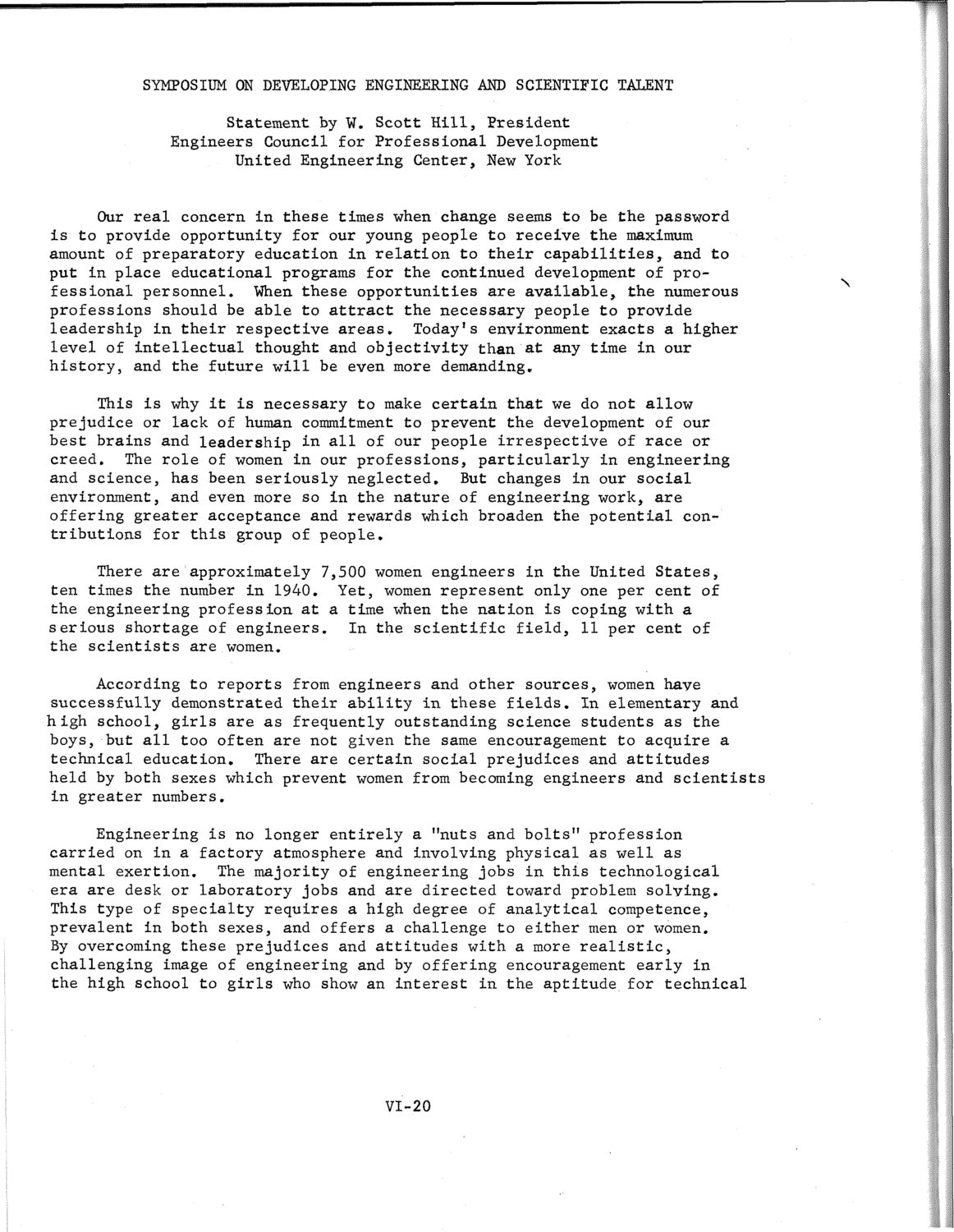| |
| |
Caption: SWE - Proceedings of the First International Conference of Women Engineers and Scientists
This is a reduced-resolution page image for fast online browsing.

EXTRACTED TEXT FROM PAGE:
SYMPOSIUM ON DEVELOPING ENGINEERING AND SCIENTIFIC TALENT Statement by W. Scott Hill, President Engineers Council for Professional Development United Engineering Center, New York Our real concern in these times when change seems to be the password is to provide opportunity for our young people to receive the maximum amount of preparatory education in relation to their capabilities, and to put in place educational programs for the continued development of professional personnel. When these opportunities are available, the numerous professions should be able to attract the necessary people to provide leadership in their respective areas. Today's environment exacts a higher level of intellectual thought and objectivity than at any time in our history, and the future will be even more demanding. This is why it is necessary to make certain that we do not allow prejudice or lack of human commitment to prevent the development of our best brains and leadership in all of our people irrespective of race or creed. The role of women in our professions, particularly in engineering and science, has been seriously neglected. But changes in our social environment, and even more so in the nature of engineering work, are offering greater acceptance and rewards which broaden the potential contributions for this group of people. There are approximately 7,500 women engineers in the United States, ten times the number in 1940. Yet, women represent only one per cent of the engineering profession at a time when the nation is coping with a serious shortage of engineers. In the scientific field, 11 per cent of the scientists are women. According to reports from engineers and other sources, women have successfully demonstrated their ability in these fields. In elementary and high school, girls are as frequently outstanding science students as the boys, but all too often are not given the same encouragement to acquire a technical education. There are certain social prejudices and attitudes held by both sexes which prevent women from becoming engineers and scientists in greater numbers. Engineering is no longer entirely a "nuts and bolts" profession carried on in a factory atmosphere and involving physical as well as mental exertion. The majority of engineering jobs in this technological era are desk or laboratory jobs and are directed toward problem solving. This type of specialty requires a high degree of analytical competence, prevalent in both sexes, and offers a challenge to either men or women. By overcoming these prejudices and attitudes with a more realistic, challenging image of engineering and by offering encouragement early in the high school to girls who show an interest in the aptitude for technical VI-20
| |